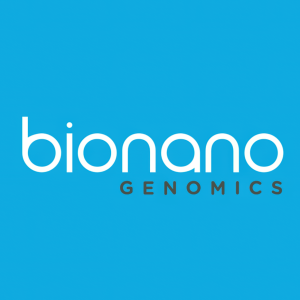OGM Added to International System for Human Cytogenomic Nomenclature
SAN DIEGO, Jan. 03, 2024 (GLOBE NEWSWIRE) -- Bionano Genomics, Inc. (Nasdaq: BNGO), today announced a publication outlining the addition of optical genome mapping (OGM) to the International System for Human Cytogenomic Nomenclature (ISCN). The OGM nomenclature is expected to be published in the 2024 edition of the ISCN guide, a reference volume covering ISCN nomenclature that is utilized worldwide by cytogeneticists, molecular biologists, technicians, and students. ISCN nomenclature is an international standard covering structural and numerical chromosomal aberrations detected by traditional cytogenetic and molecular techniques and is recognized by College of American Pathologists (CAP), Clinical Laboratory Improvement Amendments (CLIA), and other bodies responsible for laboratory standards around the world.
Having a universal, accepted naming convention to describe the genetic variants that OGM detects is critical for unambiguous reporting and accurate dissemination of research data, however there is currently no established standard nomenclature for optical genome mapping. The ISCN Standing Committee, which is comprised of an international group of experts nominated by their peers, formulated an OGM nomenclature and shared that with an international group of OGM users for their feedback.
The latest edition of the ISCN guide, last updated in 2020, is expected to include standard nomenclature used to describe any genomic rearrangement identified by OGM, as well as specific ISCN examples for the different types of numerical and structural rearrangements detected by the workflow. This nomenclature can be used by laboratories to report their findings.
“We are pleased to see the ISCN committee recognize OGM through its inclusion in their nomenclature, which has been a standard reference for cytogeneticists since 1960. An international nomenclature is essential for clear communication in publications and consistency in databases. This nomenclature will serve as a practical and easily available reference that will enable genetic laboratories to maintain consistent levels of reporting on OGM findings. Inclusion in ISCN is a significant milestone for OGM and for researchers using the workflow to advance molecular cytogenetics,” added Erik Holmlin, PhD, president and chief executive officer of Bionano.
The publication can be found here.
About Bionano
Bionano is a provider of genome analysis solutions that can enable researchers and clinicians to reveal answers to challenging questions in biology and medicine. The Company’s mission is to transform the way the world sees the genome through OGM solutions, diagnostic services and software. The Company offers OGM solutions for applications across basic, translational and clinical research. Through its Lineagen, Inc. d/b/a Bionano Laboratories business, the Company also provides diagnostic testing for patients with clinical presentations consistent with autism spectrum disorder and other neurodevelopmental disabilities. The Company also offers an industry-leading, platform-agnostic software solution, which integrates next-generation sequencing and microarray data designed to provide analysis, visualization, interpretation and reporting of copy number variants, single-nucleotide variants and absence of heterozygosity across the genome in one consolidated view. The Company additionally offers nucleic acid extraction and purification solutions using proprietary isotachophoresis technology. For more information, visit www.bionano.com, www.bionanolaboratories.com or www.purigenbio.com.
Unless specifically noted otherwise, Bionano’s OGM products are for research use only and not for use in diagnostic procedures.
Forward-Looking Statements of Bionano
This press release contains forward-looking statements within the meaning of the Private Securities Litigation Reform Act of 1995. Words such as “can,” “expected,” “will” and similar expressions (as well as other words or expressions referencing future events, conditions or circumstances and the negatives thereof) convey uncertainty of future events or outcomes and are intended to identify these forward-looking statements. Forward-looking statements include statements regarding our intentions, beliefs, projections, outlook, analyses or current expectations concerning, among other things: the publication of OGM nomenclature in the 2024 ISCN guide; the ability and utility of OGM nomenclature in the 2024 ISCN guide to standardize the description of genomic rearrangements identified by OGM; the ability and utility of OGM nomenclature in the 2024 ISCN guide to enable genetic laboratories to maintain consistent levels of reporting on OGM findings; and other statements that are not historical facts. Each of these forward-looking statements involves risks and uncertainties. Actual results or developments may differ materially from those projected or implied in these forward-looking statements. Factors that may cause such a difference include the risks and uncertainties associated with: the impact of geopolitical and macroeconomic developments, such as recent and future bank failures, the ongoing Ukraine-Russia conflict, related sanctions, the Israel-Hamas war, and any global pandemics, on our business and the global economy; challenges inherent in developing, manufacturing and commercializing products; our ability to further deploy new products and applications and expand the markets for our technology platforms; failure of OGM nomenclature to be published in the 2024 ISCN guide; failure OGM nomenclature to standardize the description of genomic rearrangements identified by OGM; failure of OGM nomenclature to enable genetic laboratories to maintain consistent levels of reporting on OGM findings; changes in our strategic and commercial plans; our ability to obtain sufficient financing to fund our strategic plans and commercialization efforts and our ability to continue as a “going concern”; and including the risks and uncertainties described in our filings with the Securities and Exchange Commission, including, without limitation, our Annual Report on Form 10-K for the year ended December 31, 2022 and in other filings subsequently made by us with the Securities and Exchange Commission. All forward-looking statements contained in this press release speak only as of the date on which they were made and are based on management’s assumptions and estimates as of such date. We are under no duty to update any of these forward-looking statements after the date they are made to conform these statements to actual results or revised expectations, except as required by law. You should, therefore, not rely on these forward-looking statements as representing our views as of any date subsequent to the date the statements are made. Moreover, except as required by law, neither we nor any other person assumes responsibility for the accuracy and completeness of the forward-looking statements contained in this press release.
CONTACTS
Company Contact:
Erik Holmlin, CEO
Bionano Genomics, Inc.
+1 (858) 888-7610
eholmlin@bionano.com
Investor Relations:
David Holmes
Gilmartin Group
+1 (858) 888-7625
IR@bionano.com










